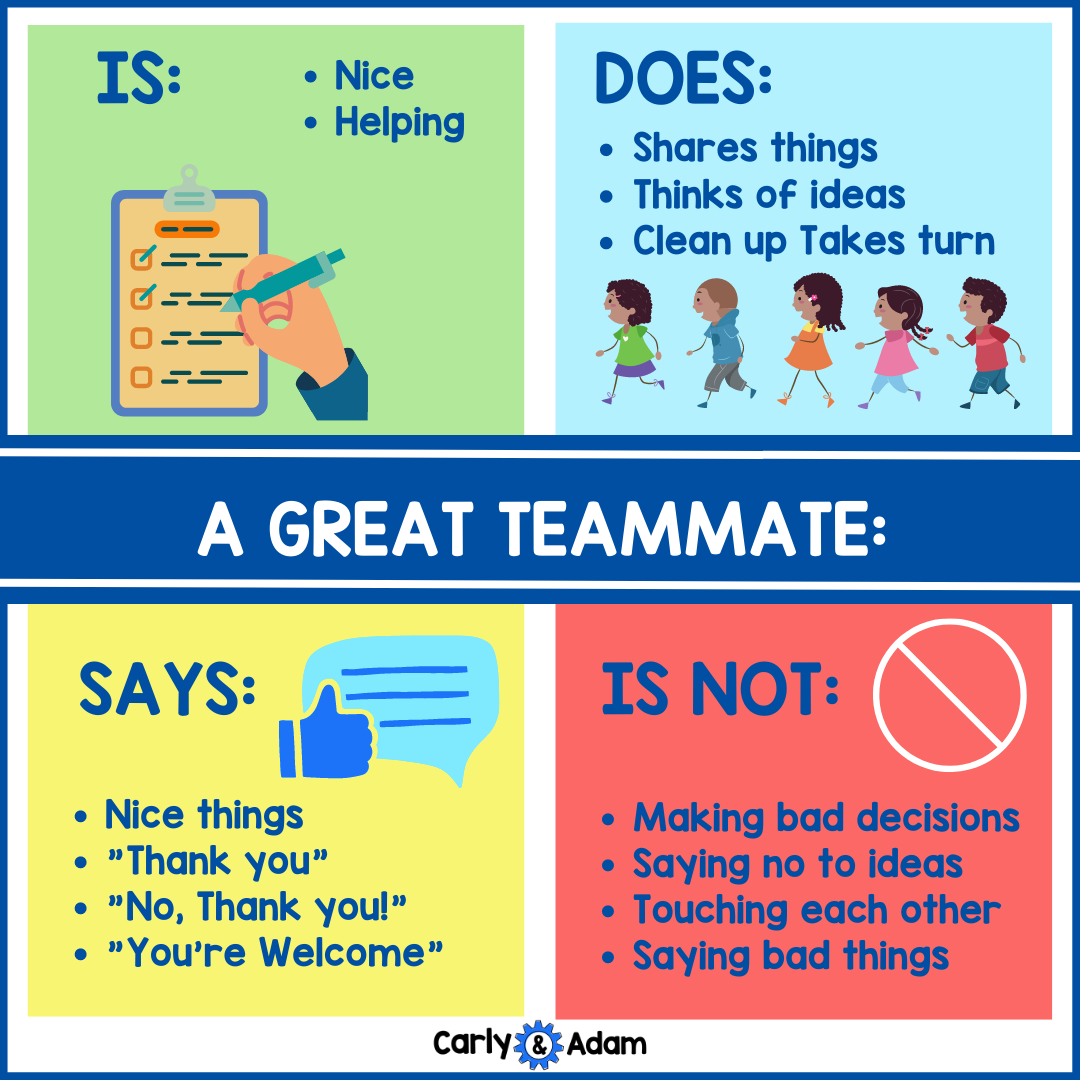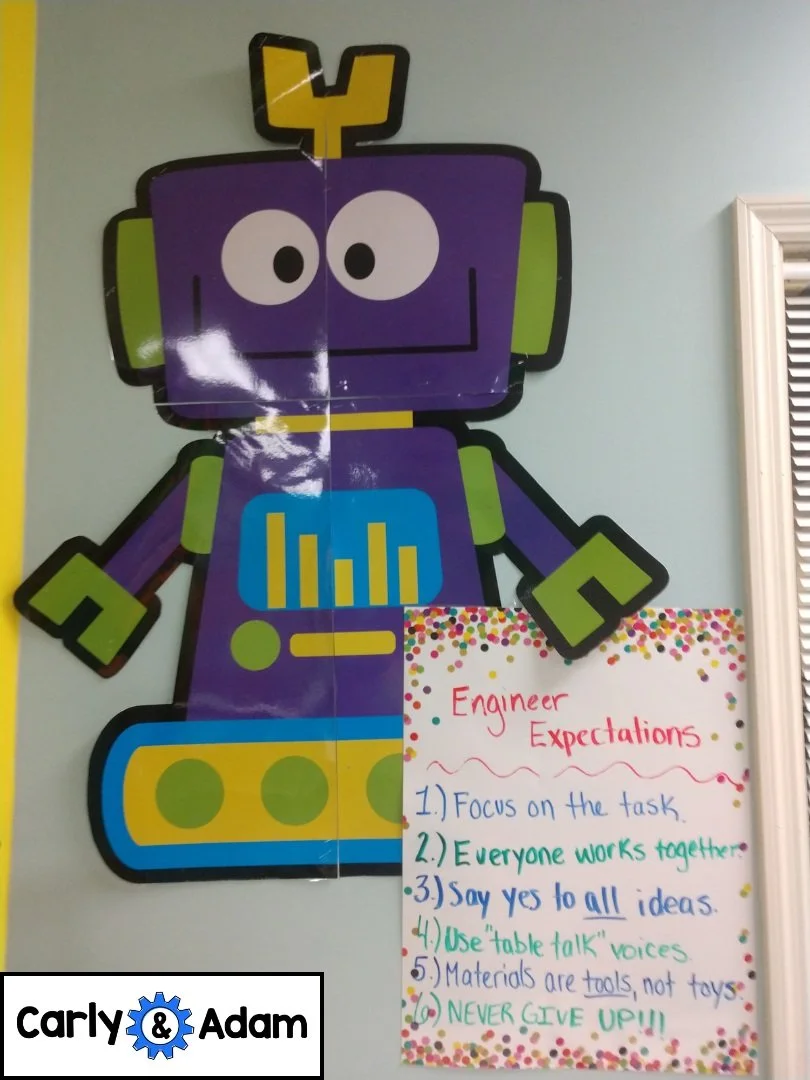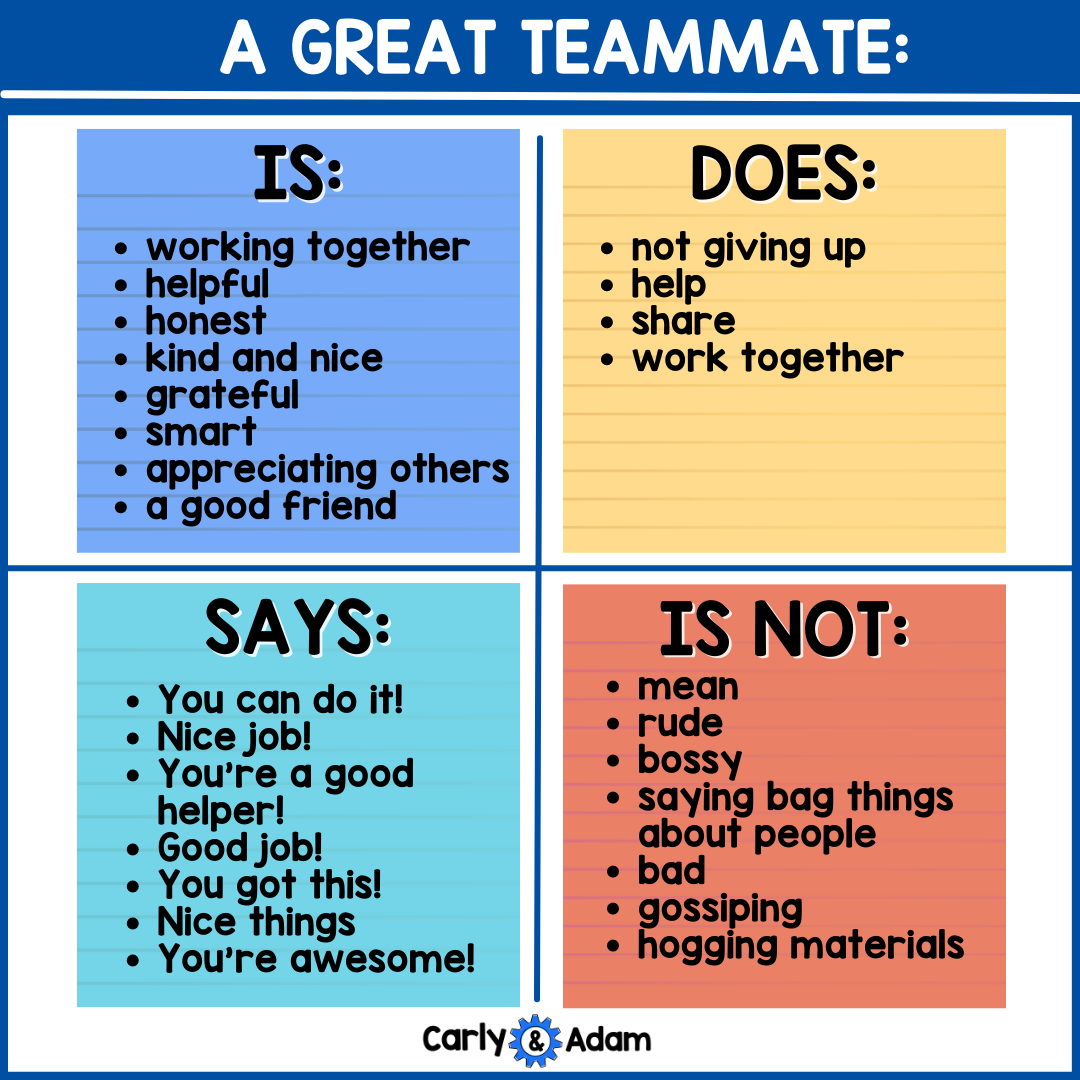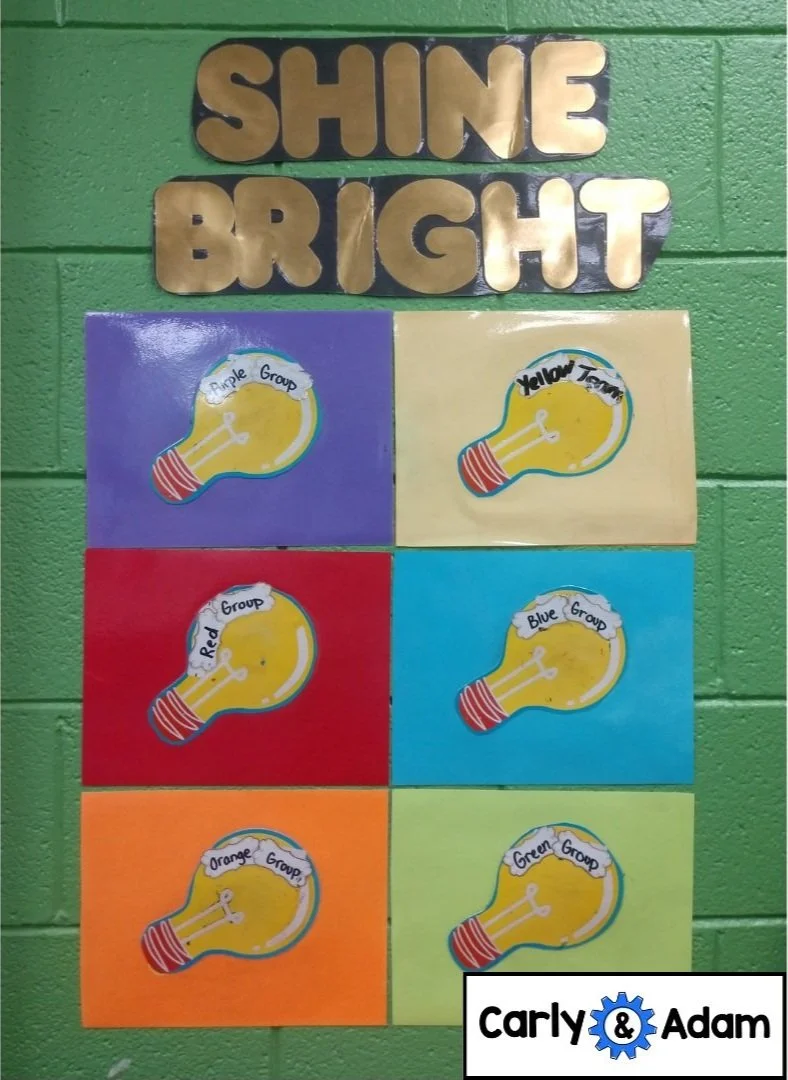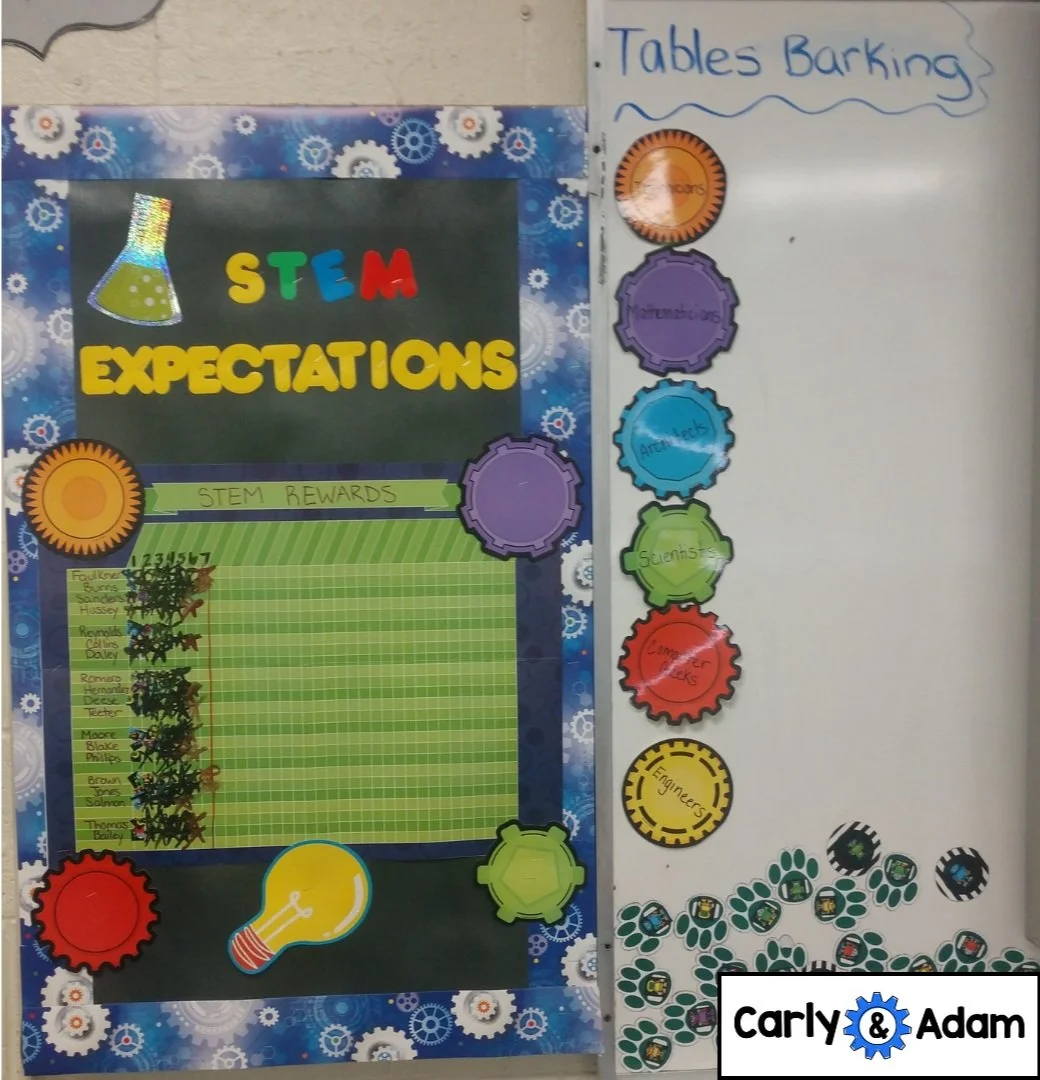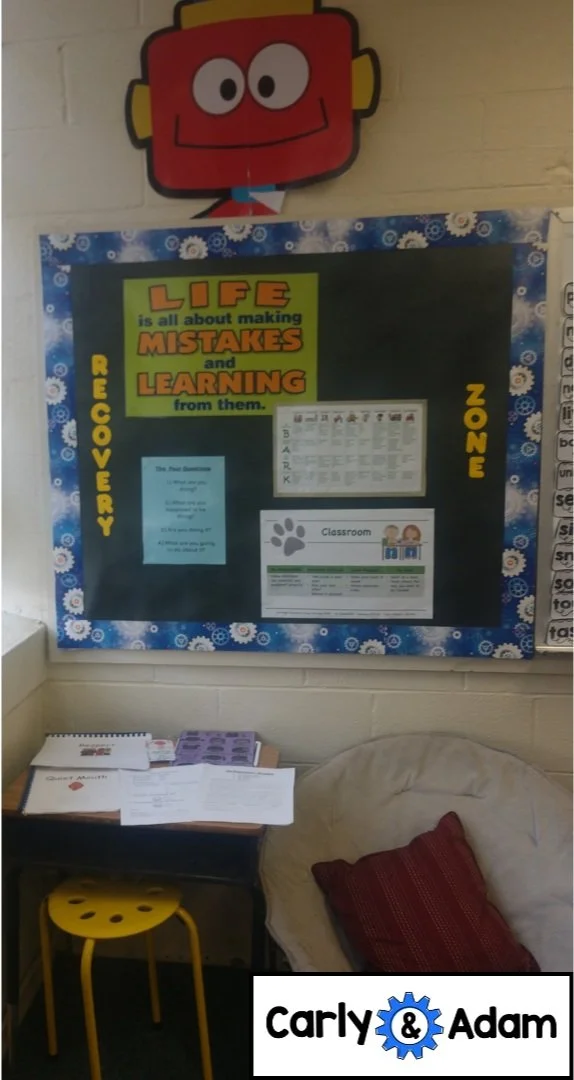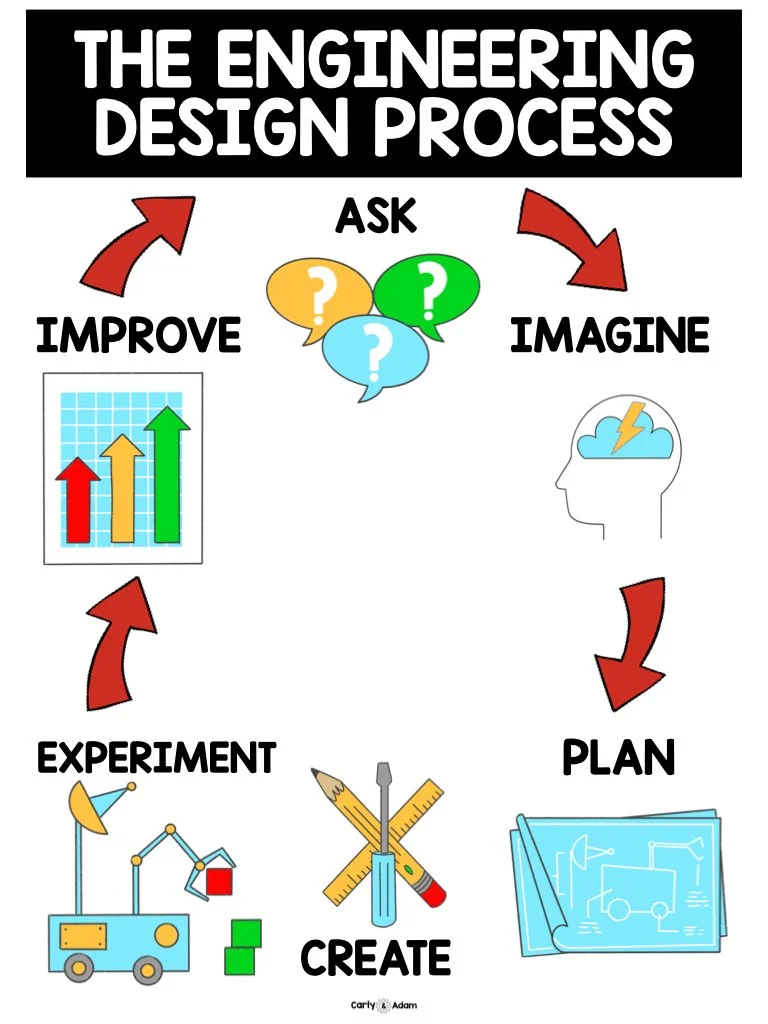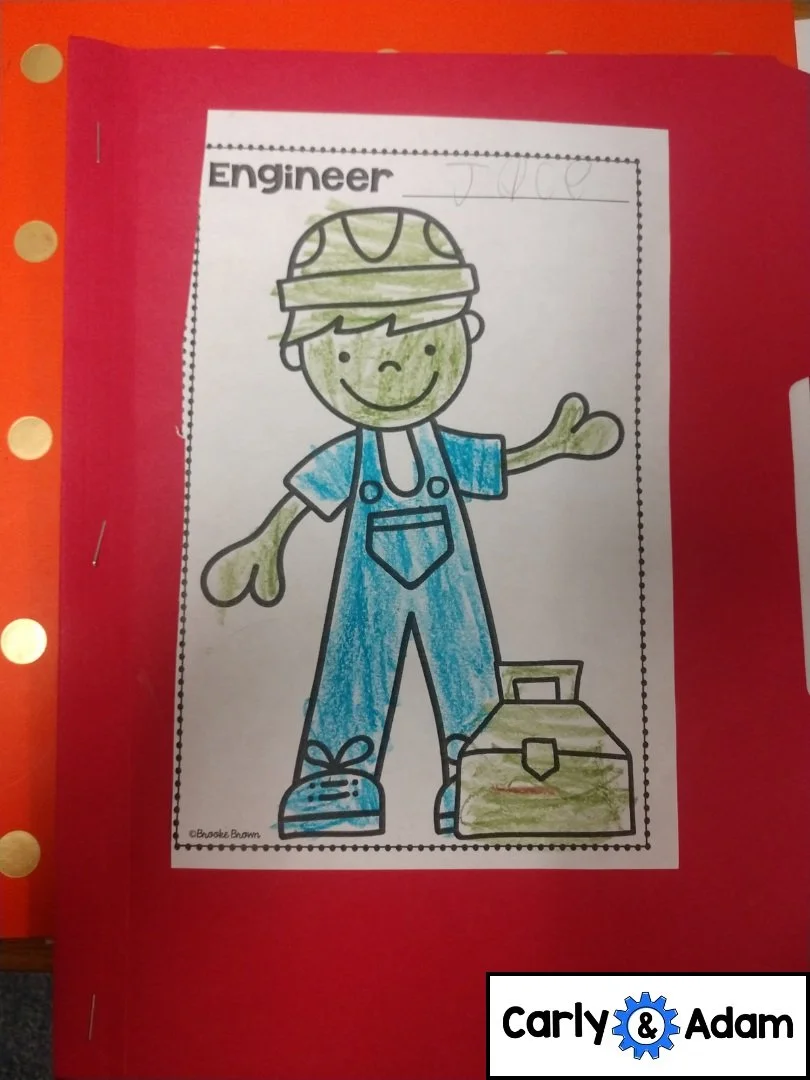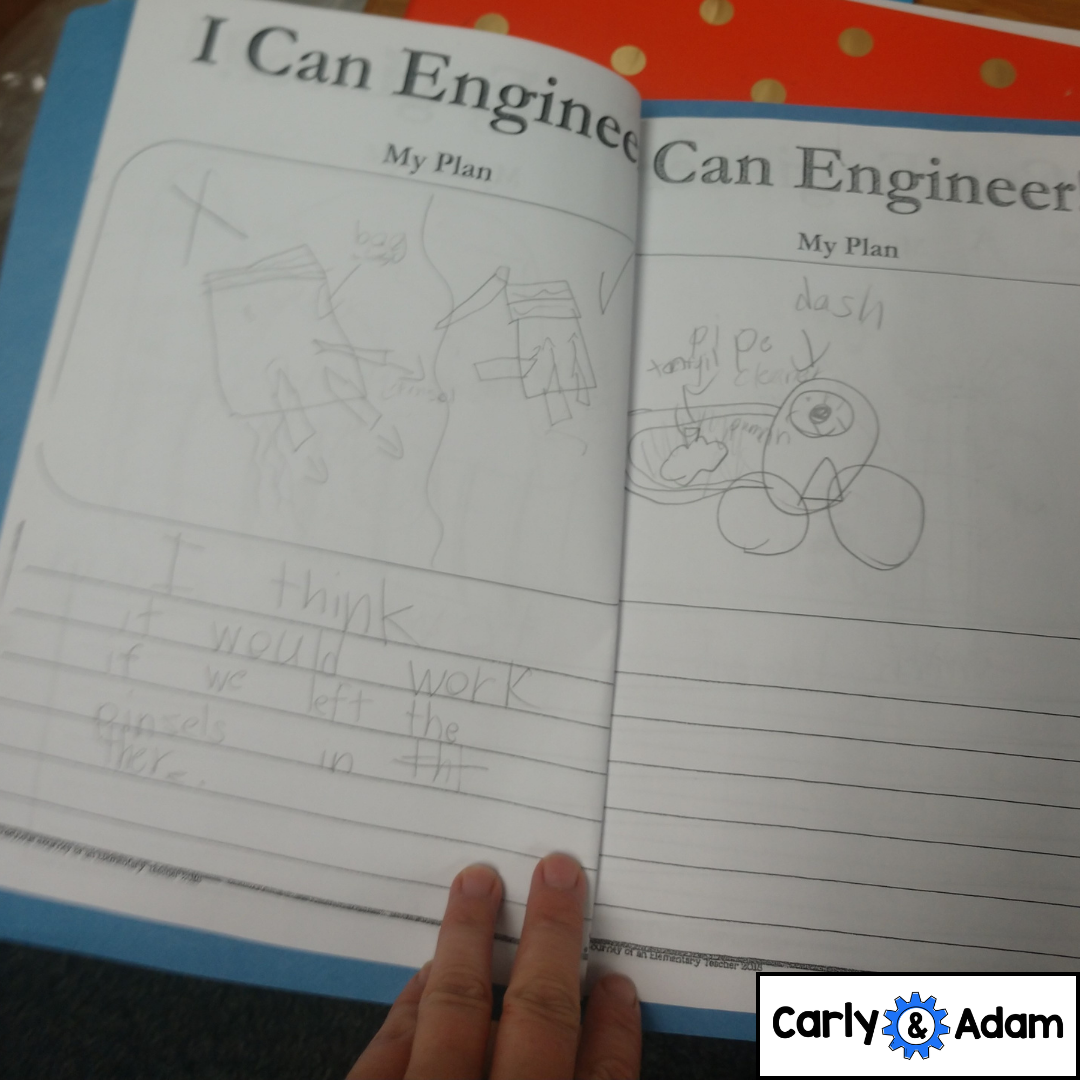STEM Classroom Management Tips
The following is a guest post from Ashley Priest.
I love walking into classrooms in my current role as an Assistant Principal and hearing teachers say, “Sorry it looks like a mess in here” or “It is not usually like this, we were just working on a project.” I always say and think the same thing…”Good!” I cannot stand walking into a quiet classroom where you can hear a pin drop.
Although there is a time and place when the classroom should be quiet,, my classroom was always almost loud, children talking, collaborating, engaged, and learning.
If visitors walked in, they saw students working (usually together and most of the time it was not quiet) This is especially true when I taught in my STEM labs.
The phrase I love to use is “Organized CHAOS.” It may look messy and all over the place, but there is management and organization behind each specific lesson.
There are quite a few different managing pieces that help a STEM Lab and classroom thrive when integrating STEM in the curriculum and classroom. To be honest, without management, the STEM lesson can completely fall apart. Most STEM lessons include students collaborating and working together.
Anyone who has had students work together knows the importance of teaching students how to work together and get along which brings me to my first management strategy.
Build a Positive Classroom Environment
The first thing I do in my STEM classroom and any classroom is build a positive classroom environment. I know that we all know the importance of this. However, this can be hard to do if you only see students for 45 minutes to an hour a week.
One thing I like to do is start the classroom off with “Good Things.” I pick 3-5 different students each week to “Tell Me Something Good.” This allows us to start our classroom on a positive note, setting the tone for the rest of class.
Establish Expectations
The next thing I always do is establish STEM or Engineer Expectations. These are 6 simple rules that I give the students to follow when integrating or doing STEM lessons. The expectations are as follows:
Focus on the Task
Work Together
Consider All Ideas
Materials are “Tools” not toys
Use “Table Talk” Voices
Never Give Up!
I always allow the students to come up with actions for each of these expectations and then we repeat these rules and actions at the beginning of each class. They are also posted at the front of my classroom for all to see clearly.
Set Up a Team Contract
After establishing Good Things and Engineer Expectations, it is important to set up a Teammate Contract. I want the students to discuss how to be a good teammate.
I have a paper divided into fours and I give it to each table to discuss what a good teammate is, does, says, and is not.
We then discuss this as a class and come up with one Teammate Contract for the whole class to follow. I make sure to review this as a class at the beginning of each STEM lesson.
Reward Your Students
In order to follow through on the expectations and Teammate Contract, I make sure to reward students for following the rules and expectations. I name a STAR STEM student at the end of every class.
I tell students that I am looking for students who are following the expectations and being a good teammate. These special students earn a certificate. I also give out table rewards.
Every time I see a table doing the right thing from our social contract, they get a check or star. The table with the most checks or stars gets a reward at the end of class, such as dojo points, school bucks, or something from the prize box. I also allow classes to earn rewards altogether.
If I see all tables working hard and being a good teammate to each other, they also earn a star or check. After so many checks and stars, the group or class can earn a free STEM day to explore and use all kinds of different STEM tools and STEM tubs we have in the STEM lab.
Teaching about teamwork is not always easy and expectations and rewards help, but sometimes students also have to be taught how to work out disagreements.
One thing I love to teach students is the simple method of rock, paper, scissors. This helps students work out agreements on their own without me constantly having to intervene.
Build a Recovery Zone
Sometimes students become so frustrated that they just need a break.
This is why I always have a “Recovery Zone” in my classroom. This is a center with a comfortable chair and a desk with relaxing tools where students can go if they need a moment to gather their thoughts.
Sometimes I send students over there if I see they are struggling. Sometimes I will have them write a reflection if needed but most of the time students just need a moment to gather themselves and then they can make it back to their table to try working with their group again.
If I see a student over there for a long time, I may go and talk to them to get them back on track. The goal is for students to just use this zone as a break and then make it back to their table and continue to work together.
Assign Roles and Set Up Your Classroom
Since STEM includes a log of working together and collaborating, I always have my classroom set up in tables. Most of the time, by giving the engineer expectations and teammate contracts, students can learn to work together on their own.
At the beginning of the year and with some classes, I may have to assign roles for each teammate so not one person is just taking over.
For instance, one person will be the Team Captain who is in charge of making decisions and keeping everyone on track. Another student could be the Materials Master who is in charge of gathering materials and making sure everyone is using them right.
The Testing Coordinator tests ideas and determines when the team is successful. The Reporter and Recorder is the one who draws and designs the plan according to everyone’s ideas and explains the plan and challenges to the whole class once finished.
Everyone has a specific role but it is still up to the entire group to plan and build their idea together. Everyone should be helping with the main challenge or question for the STEM lesson.
Use the Engineering Design Process
In my STEM room, I used the Engineering Design Process of Ask, Imagine, Plan, Create, and Improve.
In the Ask stage, I define the problem or challenge for the students (possibly with a read aloud), I then go over the materials with the students and usually provide visuals for K-2 students, and state the constraints.
In the Imagine and Plan stage, I allow students to each come up with their own plan in their individual engineer journals that we make at the beginning of the school year. This is where students are thinking for themselves and then they must all share their ideas with their group and come up with one plan together, whether it is using someone’s idea or combining plans together.
In the Create stage, students work on building their plan. I almost always use a timer in this stage to help students stay on track especially since we have a limited amount of class time. Students can modify or change their plan as they go along if they realize it is not working at this stage.
In the Improve stage, we usually talk as a class and reflect on each specific table’s project. Students share out if their plan worked or did not work and what changes they may have had to make or what they might have done differently to improve their plan. Sometimes, we share our as a whole class, and sometimes we share out digitally through apps like Flipgrid and Seesaw.
As I mentioned in the beginning of this blog, STEM can be messy and seem chaotic. STEM will and should never be a quiet peaceful time. It may look different than a traditional classroom and that is okay because students are learning and growing their brains in so many ways.
When I think of a STEM classroom, I think of engagement, collaborative teams, effective communicators, higher noise level, students driving projects, adults wandering around and asking inquisitive questions to different groups, students moving around and not sitting in one spot, students mimicking engineers, everyone has a voice, and students feeling they are in a safe zone and it is okay to make mistakes.
STEM is organized chaos and that is okay!
Have more questions or need additional resources?
Download our Free STEM challenges from our Free STEM Resource Library.
Join our Free Facebook Group.
For more STEM ideas, inspiration, and collaboration with other STEM teachers be sure to join our FREE Facebook group Elementary STEM Teachers with Carly and Adam!
We hope you have found this blog post helpful. To stay connected with Carly and Adam's teaching tips and classroom freebies be sure to follow us on Facebook, Pinterest, Teachers Pay Teachers, and subscribe to our blog!
Ashley has served as an educator in an elementary setting the last nine years. She has always been a tech geek and fell in love with STEM when she was introduced to it six years ago. She opened one of the first STEM labs in Moore County, NC, and loves to teach STEM and Tech camps over the summers. She has also served as a Kenan Fellow. Ashley believes in making STEM relevant to her students and wants everyone to have the power to believe in themselves. STEM has the poswer to light fires of passion in teachers and students. Currently she serves as an Assistant Principal in two K-8 Schools in Moore County, NC. One of her main goals is helpping teachers to integrate STEM in their classes, and teach with passion and innovation. She believes in hooking hearts through STEM and innovation. Connect with Ashley on Twitter @AP_AshleyPriest.
“Whatever it is, the way you tell your story online can make all the difference.”

